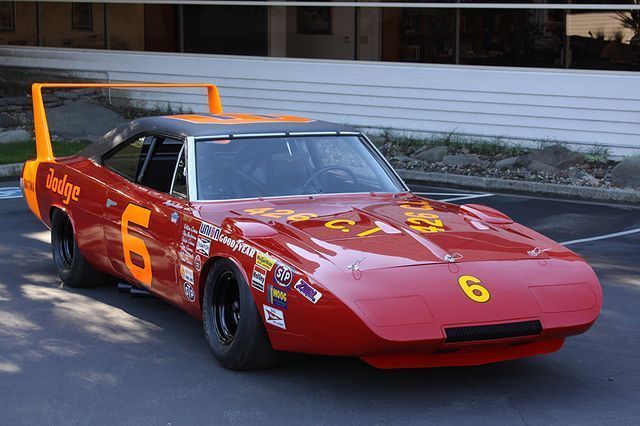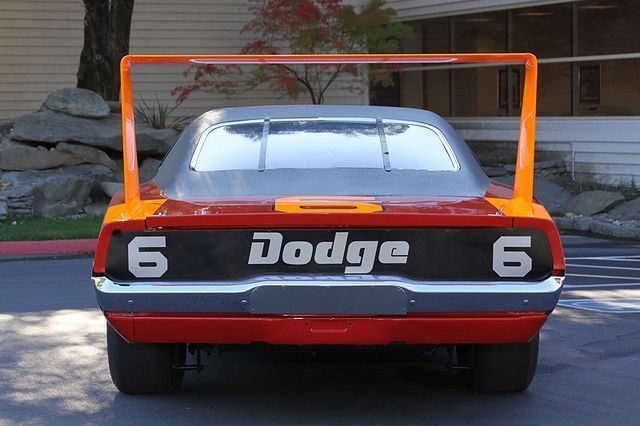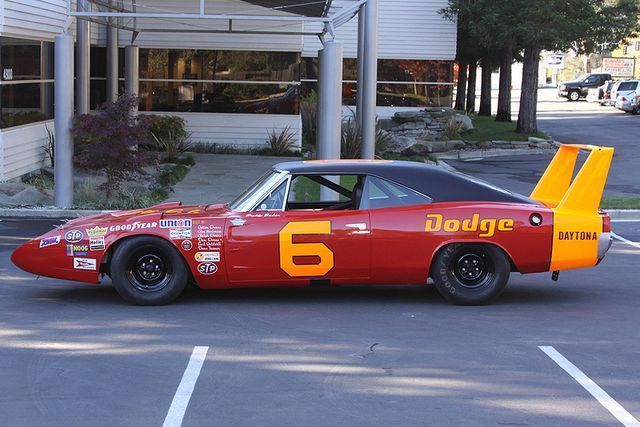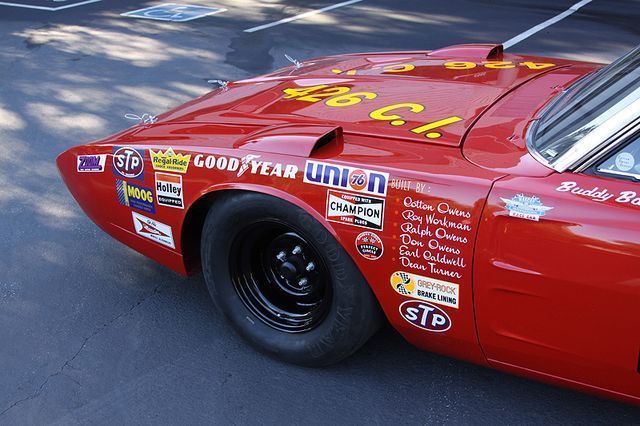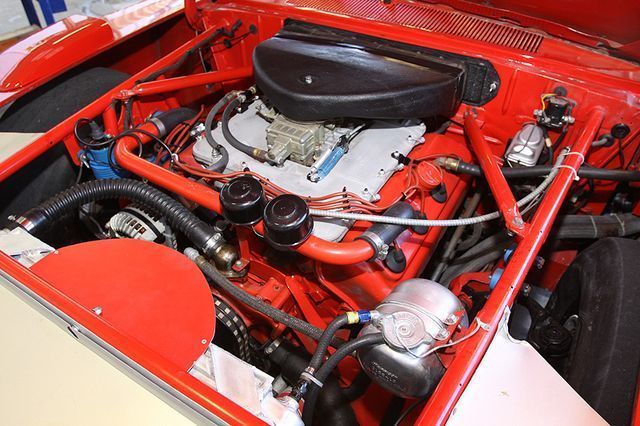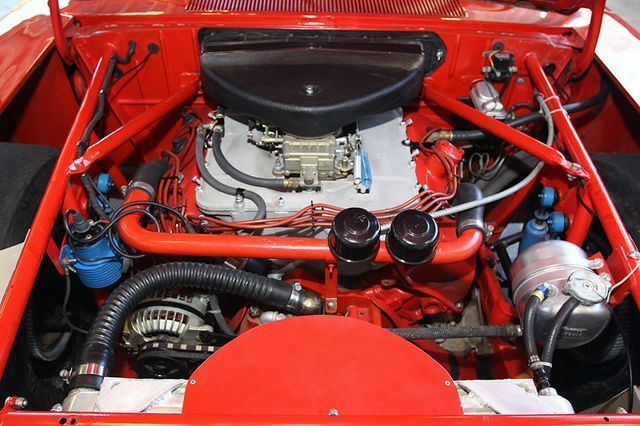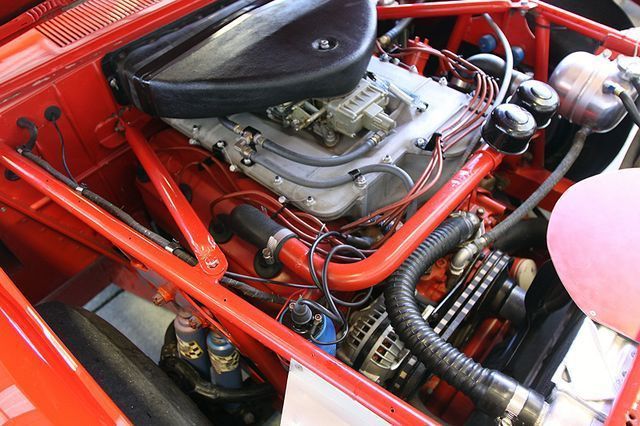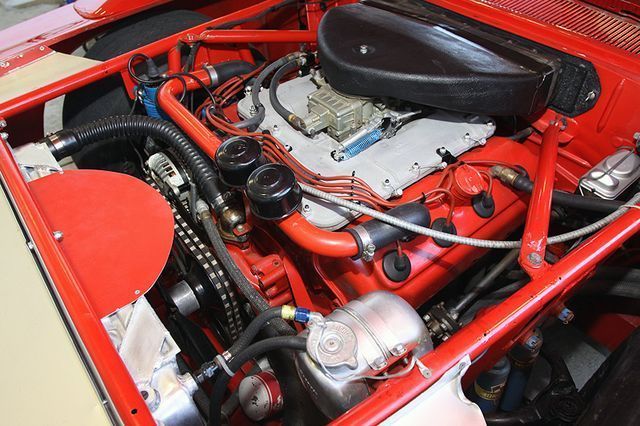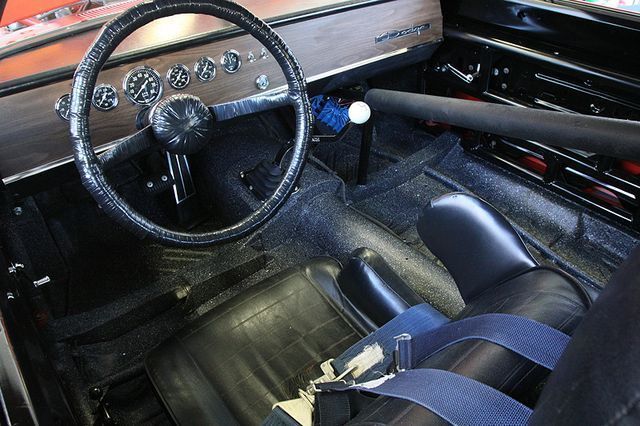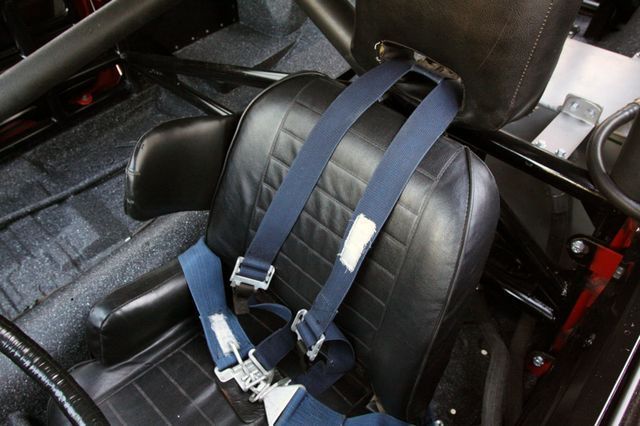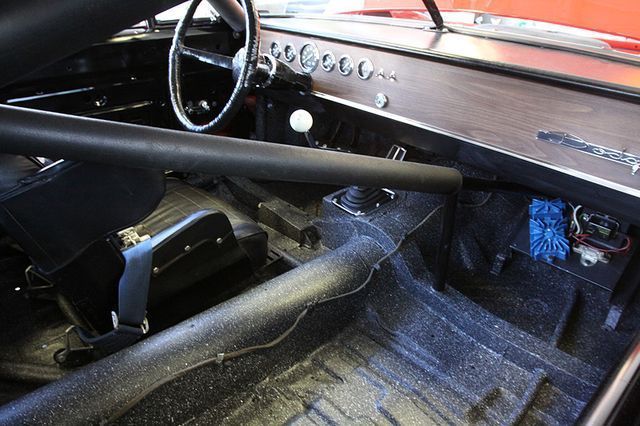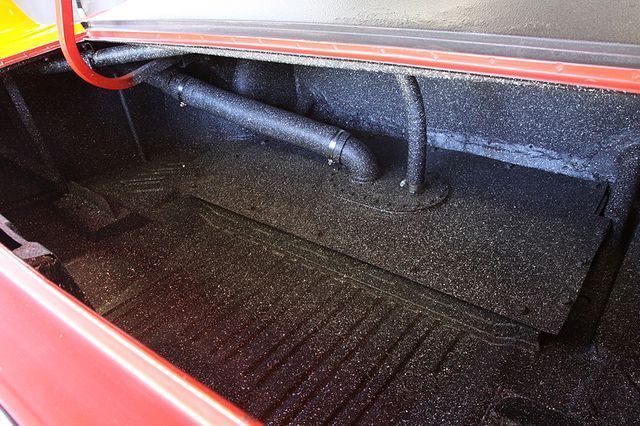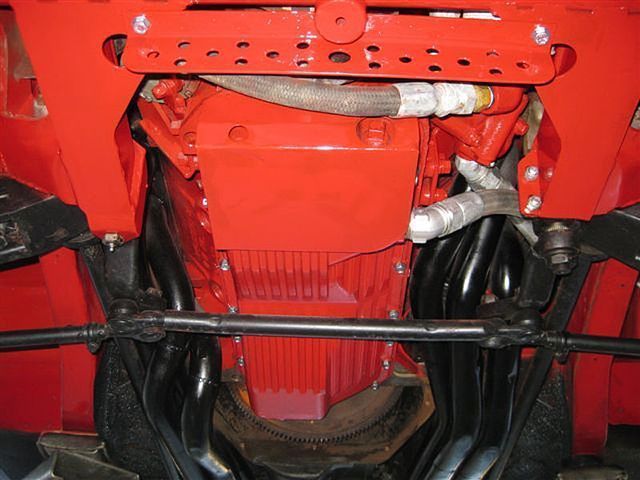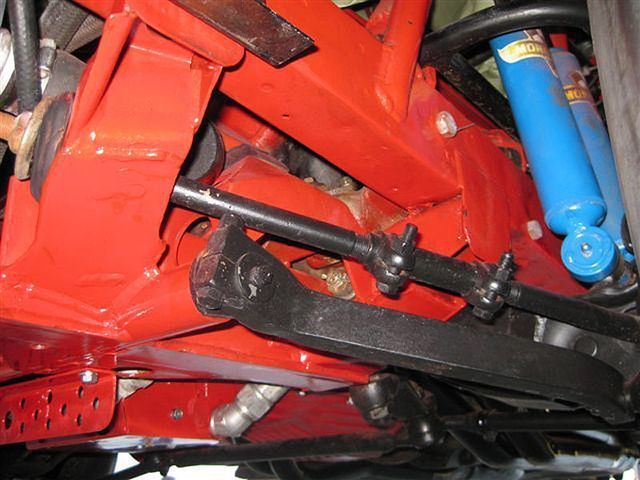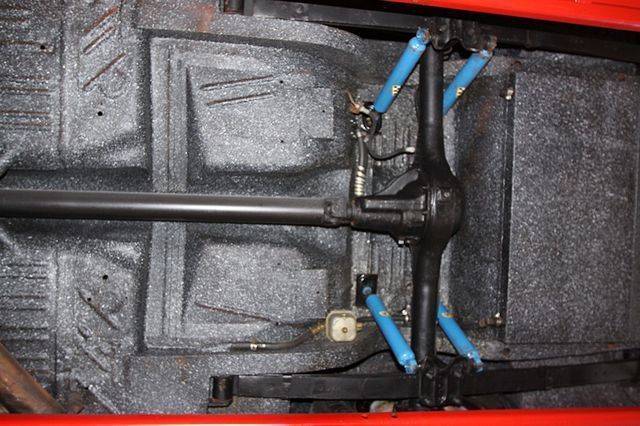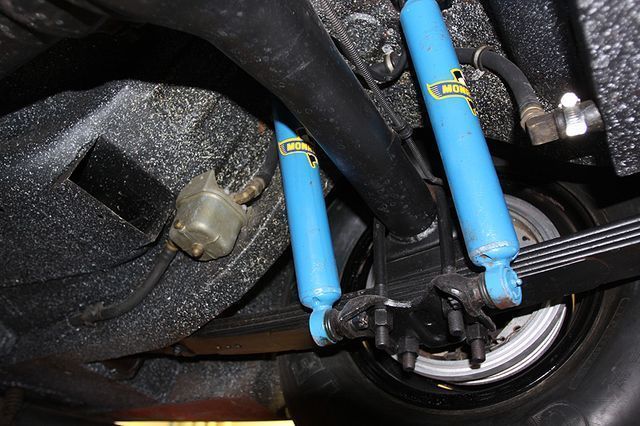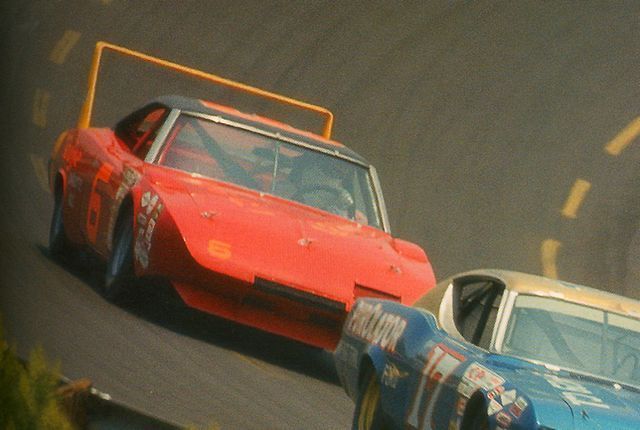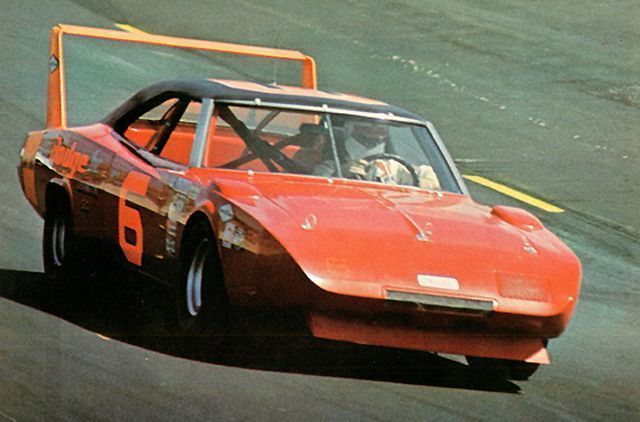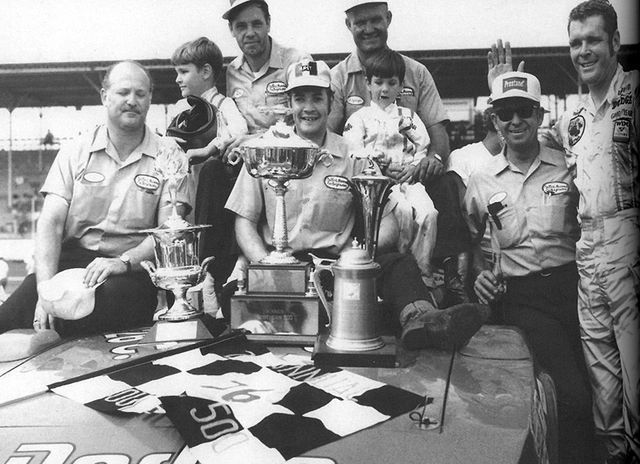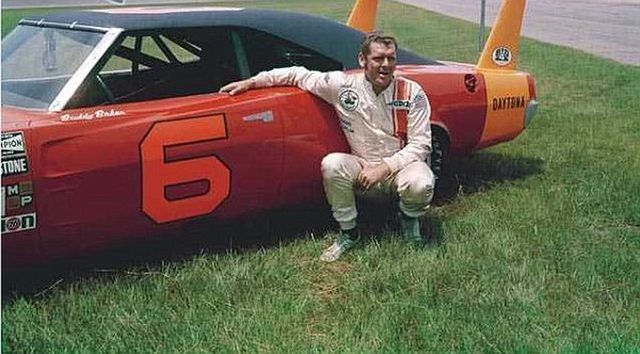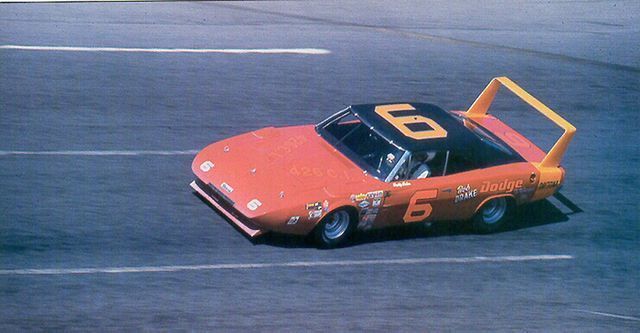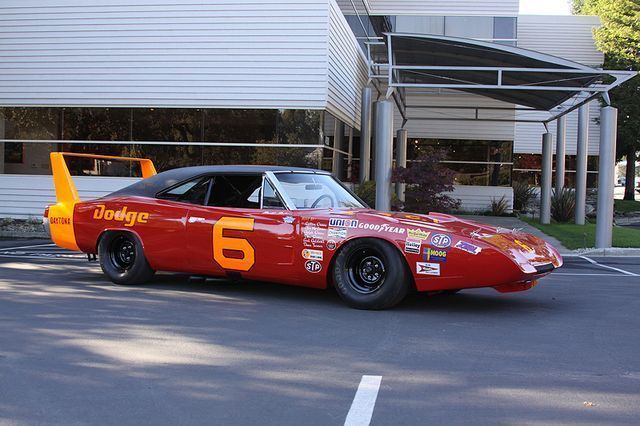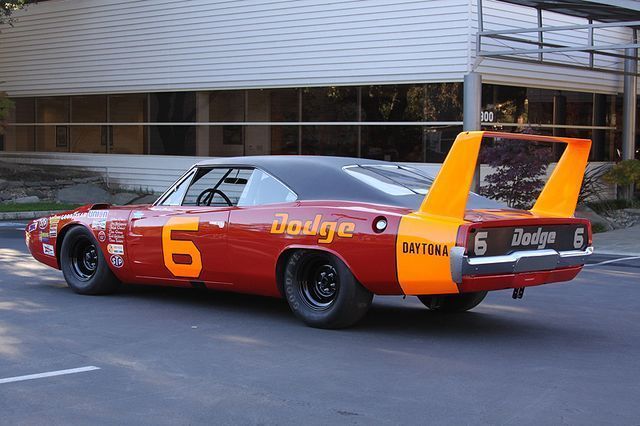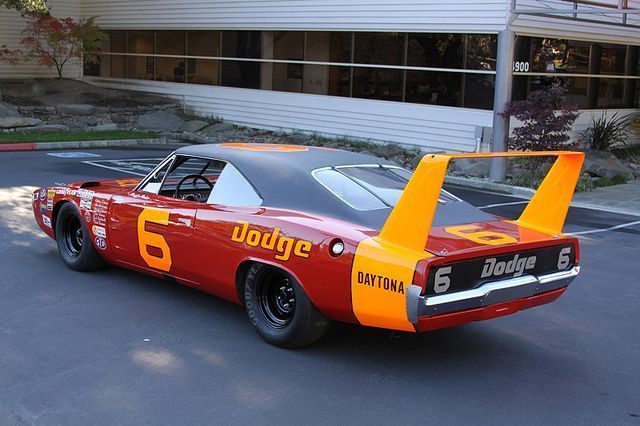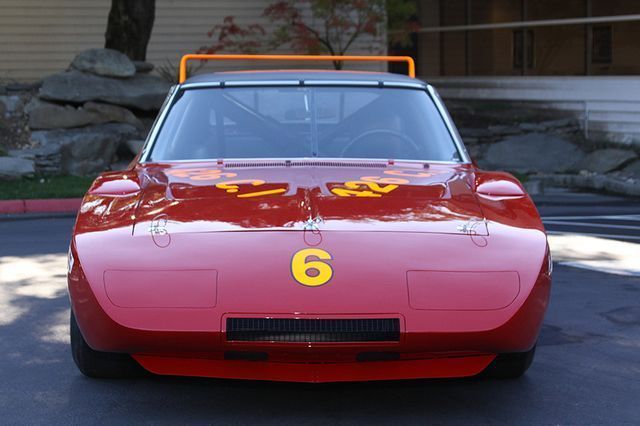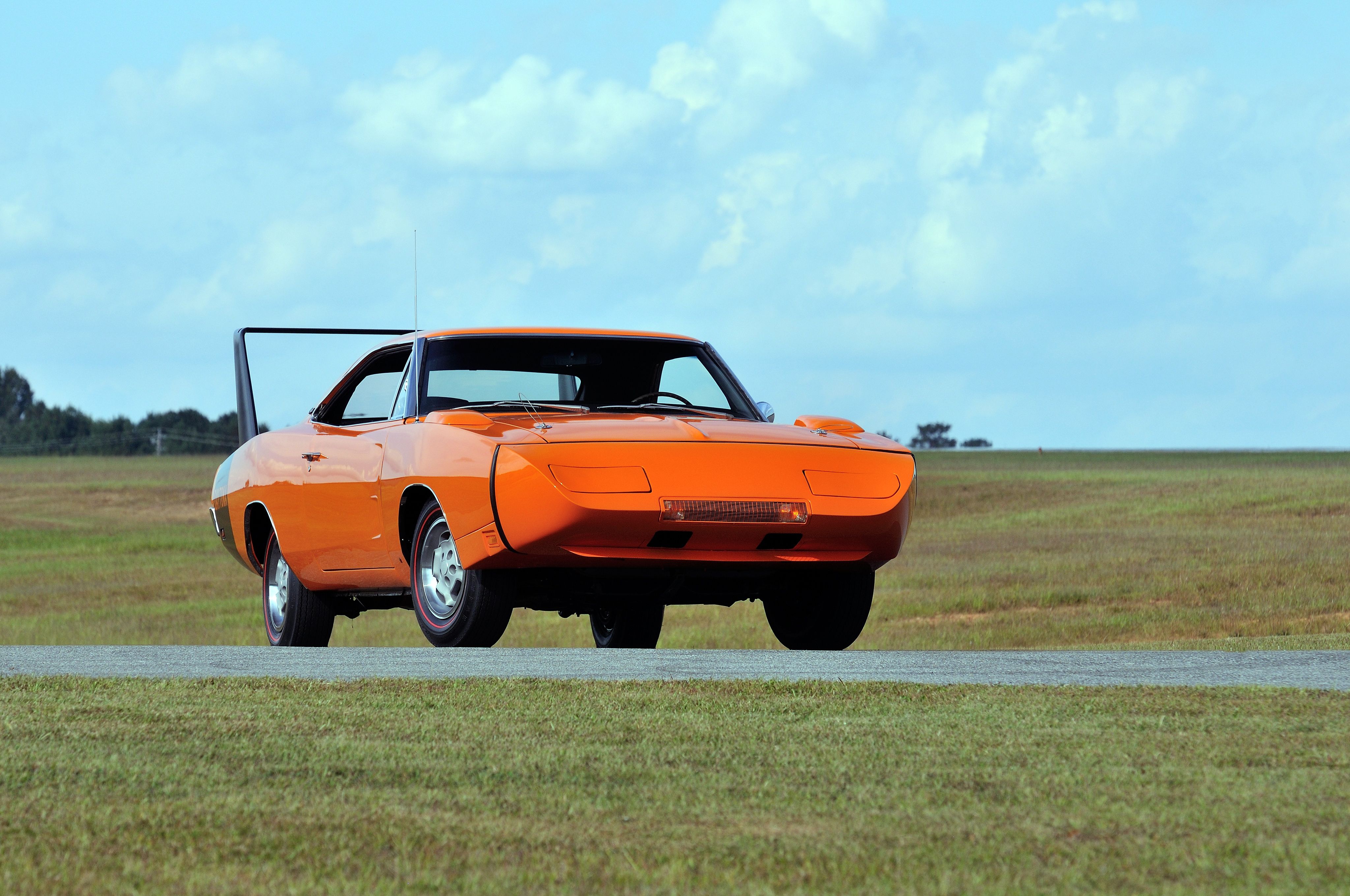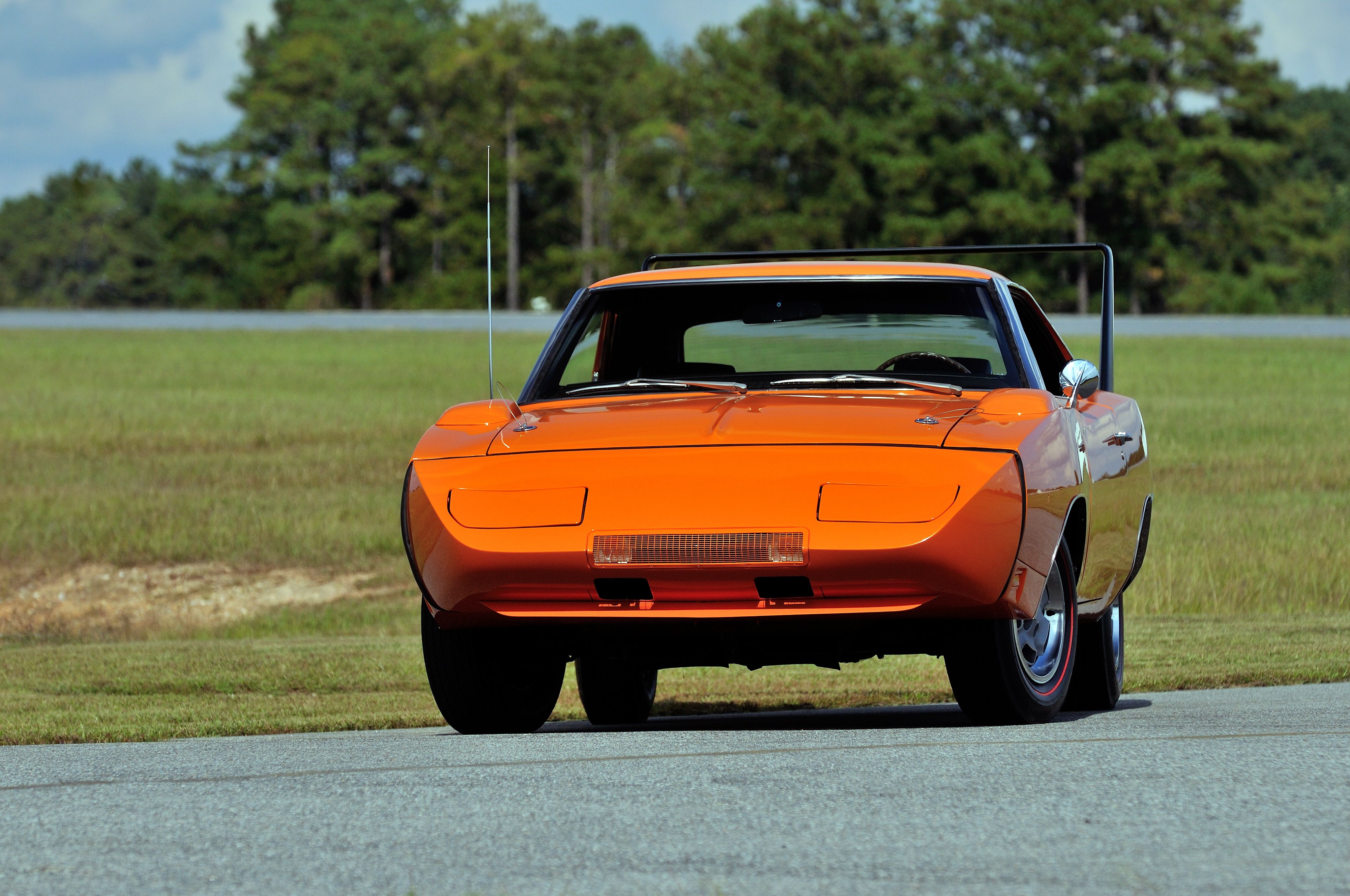The original Dodge->ke28 Charger had been somewhat of a failure for Chrysler. It sold in large numbers to the public, but remained without a win in racing. The year 1969 was the time Chrysler and Dodge decided to pull out all the stops and turn the Challenger into a formidable racing machine. What emerged was the Dayton model that looked like a mix between an airplane and the original Charger->ke218.
This #6 car for sale through Canepa Design holds a special place in the racing record books, being the first car to break the 200mph mark. The car led that race for over 100 laps until another car put it into a spin knocking it out of the race. These 1969 Dodge Charger Daytona models are very rare and sought after by collectors. Even fewer were built with the Hemi engine such as this car and none have the same race history. If you would like to own a piece of history than expect to pay over six figures when this car hits the block.
Hit the jump for more details on the Dodge Charger Daytona.
1969 Dodge Charger Daytona
- Make: Array
- Model: 1969 Dodge Charger Daytona
- Engine/Motor: V8
- Horsepower: 475
- Transmission: 4-speed manual
- [do not use] Vehicle Model: Array
Race History
This car was owned by Cotton Owens and driven at seven races by Buddy Baker. Its most important day may have been on September 7th, 1970 when the car took first place in the Southern 500 at Darlington. Driver Buddy Baker had quite an amazing career both with this car and other teams winning 19 races in all. In a way, he is Nascar’s fastest man having set the record for the fastest Daytona 500 ever run. During the 1980 Daytona 500, he ran at an average speed of 177.602mph.
After Chrysler had introduced the “winged cars” they immediately began to dominate racing. This specific car struggled in its first few races, but managed several top-ten finishes. The cars were so fast and powerful that Nascar instated a new rule the following year that limited the engine size for all cars. After this car raced its last race at Charlotte in 1970, it went through several stints as a show car. It was taken to Cobo Hall in Detroit, the NASCAR museum at Darlington and eventually given back to its owner.
Race Results
|
Buddy Baker |
Standing |
|
Daytona |
DNF |
|
Rockingham |
DNF |
|
Atlanta |
DNF |
|
Alabama 500 |
First Lap over 200mph DNF |
|
Firecracker 400 |
2nd |
|
Atlanta |
4th |
|
Michigan |
5th |
Exterior and Interior
Chrysler was losing more and more races to the likes of Ford and they felt it was time to do something about it. The Challenger was a big, underpowered brick flying through the air on a race track and engineers knew that the drag coefficient needed to be increased. An 18-inch steel nose cone was the first solution to the problem. The big nose looked ridiculous to many, but helped to improve efficiency and provide downforce at high speeds to reduce the chance of liftoff. For racing, this was a good solution because the engine was cooled more effectively at high speeds, but it became troublesome for the road going models. The nose blocked the front grill and air from reaching the engine compartment, and it also made parking a nightmare.
The distinctive rear wind was roughly 58” wide and stood 2’ in the air over the decklid. It was so massive that it provided downforce as well as stabilization from the upright sections, much the same way the stabilizer in the back of an airplane works. Other changes were made to the slope of the windshield and rear window to help lower drag. Wind testing at Lockeed led to engineers discovering that the improved Charger had increased 20% in aerodynamic efficiency. These results were thrilling because it showed the car would easily be faster than most anything on the track. It reached 200.447mph with Buddy Baker at the wheel at Talladega.
The Charger R/T and the Daytona models shared much of the same running gear. The interior was especially unchanged vs. the other models. The same wood paneled dash, steering wheel and seats were installed in every Challenger Daytona.
Performance
These Daytona models were sold to the public with several different engine options varying in size and horsepower. The undisputed king-of-the-hill was the HEMI models like the one seen here. They featured a 426 cubic inch V8 that was rated at 425hp at 5,000rpm and 490 lb-ft. of torque at 4,000rpm. The engine was so big and powerful that extra strengthening had to be built into the chassis and engine mounts so that it did not shake itself loose and tear the car to pieces. This engine makes this car even more rare considering that Dodge only sold 75 Hemi units in the United States.
This car has a four-speed Hurst transmission that was known for its durability. The 440 and Hemi models all featured this transmission versus the 3-speed torque flight automatic that was available. Muscle cars have never been known for handling and this behemoth ran on the standard R/T chassis complete with leaf springs and anti-roll bars. When looking at these Daytona models it can be hard to tell a real one from a fake – one way is to look at the VIN number. Every Daytona was built at the Hamtrack plant in Michigan and features the letter “B” as the seventh digit in the car's VIN number. To many, these cars are some of the wildest creations to ever come from Detroit and the muscle car era – true collector's pieces, and one with a race history makes it even more enticing.

